Nexus 7 (2013) - Mini Review
by Brian Klug on July 27, 2013 12:54 AM EST- Posted in
- Tablets
- Snapdragon
- Qualcomm
- Android
- Mobile
- APQ8064
- Nexus 7
- Android 4.3
Last year the Nexus 7 debuted with a Tegra 3 SoC, which for reminder consisted of a 4+1 architecture of ARM Cortex A9 CPUs, with the 4 A9s built on 40nm G, and the +1 “shadow core” A9 built on 40nm LP (TSMC’s 40 LPG process), accompanied by ULP GeForce GPU with 12 cores running at a max GPU clock of 416 MHz. The exact SoC was NVIDIA’s Tegra 3 T30L, which could run one A9 at up to 1.3 GHz and all A9s at up to 1.2 GHz.
Rather than the relatively logical upgrade path of going to NVIDIA’s Tegra 4 SoC (I’ve heard all manner of speculation about what happened there), the new Nexus 7 switches to Qualcomm’s APQ8064–1AA, a version with 4 Krait 300 CPU cores (yes, Krait 300, not 200) running at up to 1.5 GHz and Adreno 320 graphics. Rather than use a PoP and LPDDR2, this specific APQ8064 variant goes to PCDDR3L–1600 MHz instead, including 4, 4Gb discrete 1.35V SK-hynix DRAM devices off to the side (more on the opposite side of the PCB) adding up to 2 GB of RAM. Qualcomm's Snapdragon S4 Pro and Snapdragon 600 branding gets confused here, although Qualcomm is calling the APQ8064 inside the Nexus 7 (2013) S4 Pro, it's more like an underclocked or lower binned Snapdragon 600.
At this point APQ8064 is probably the most well understood SoC in recent memory (so much so that I’m pining for devices to include something different just from an academic perspective) so I’ll spare the very verbal discussion about its performance.
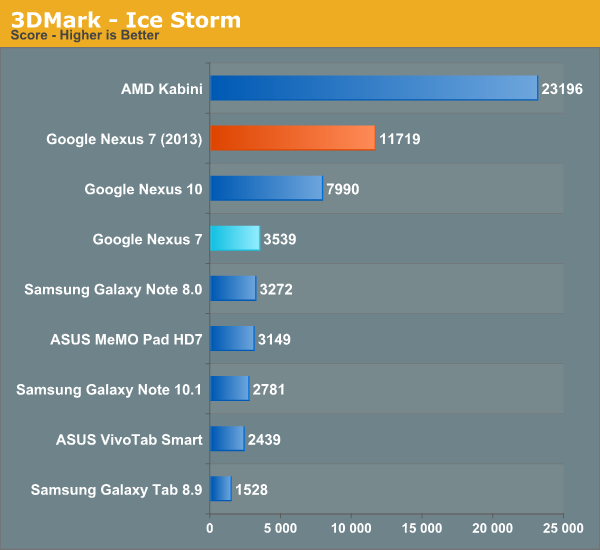



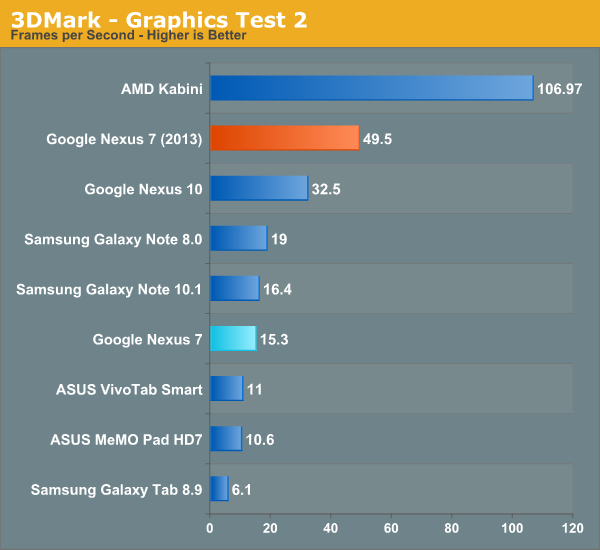
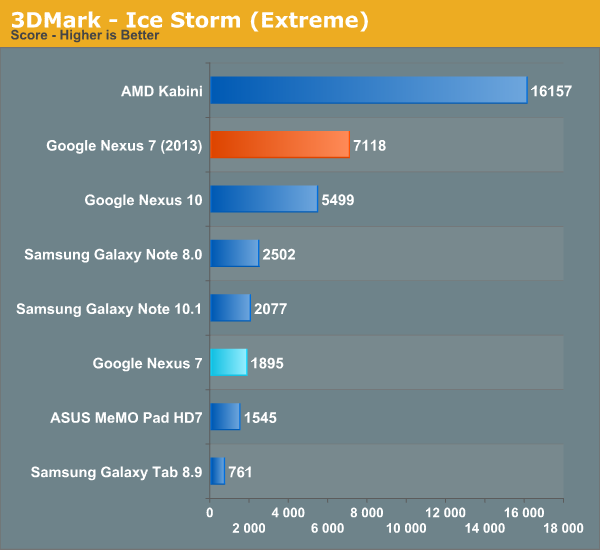

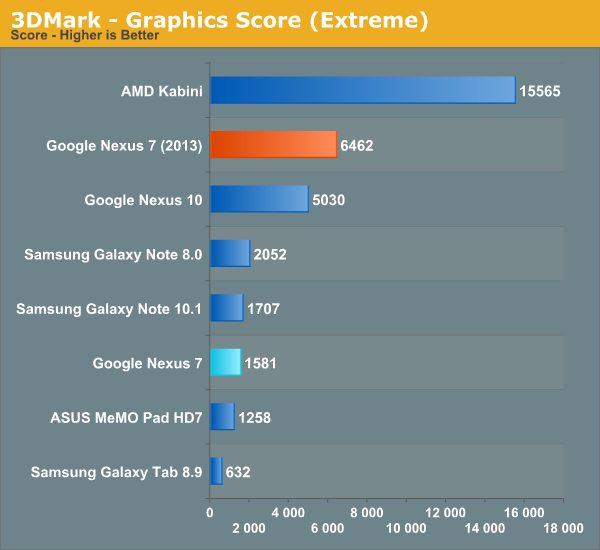

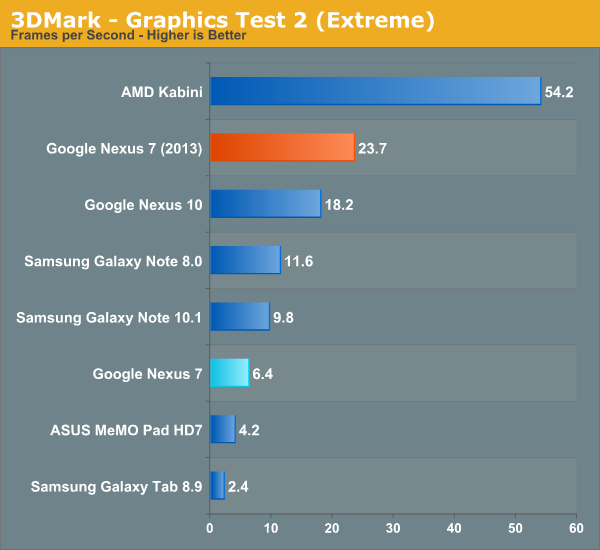


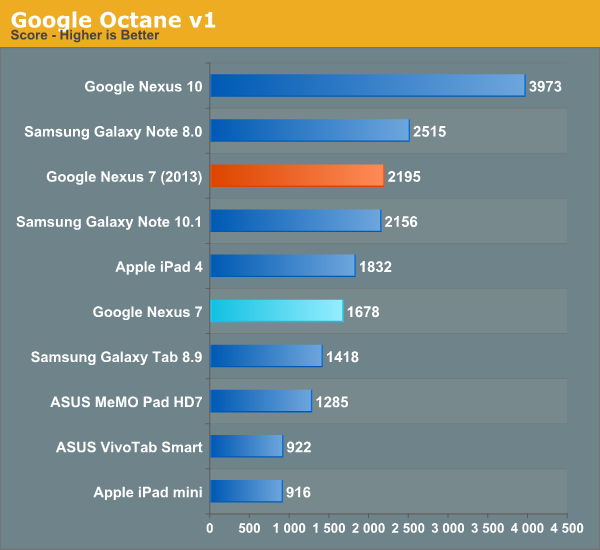
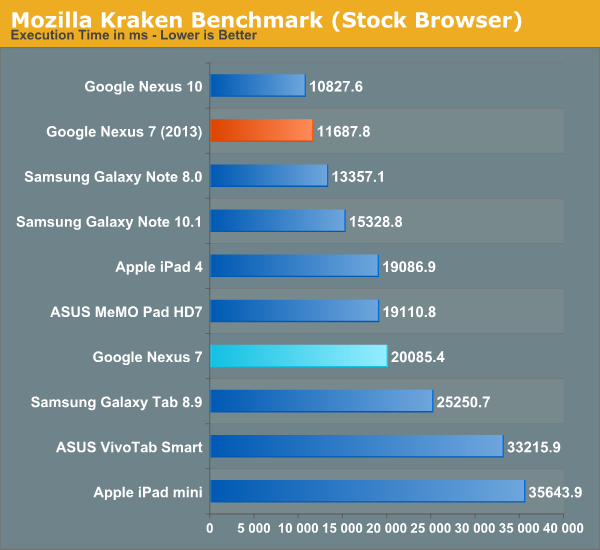
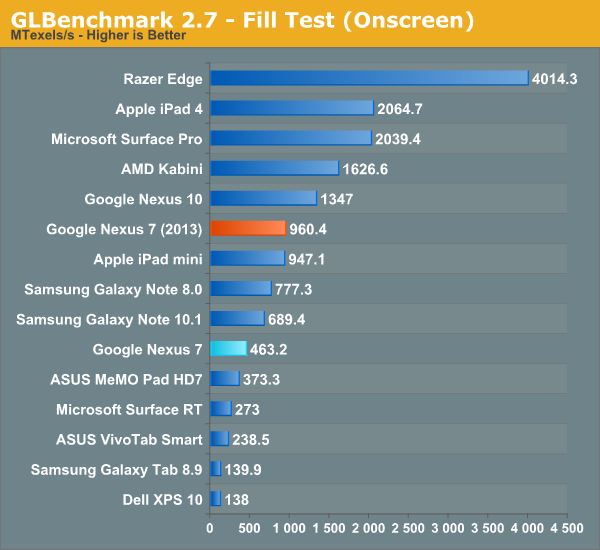
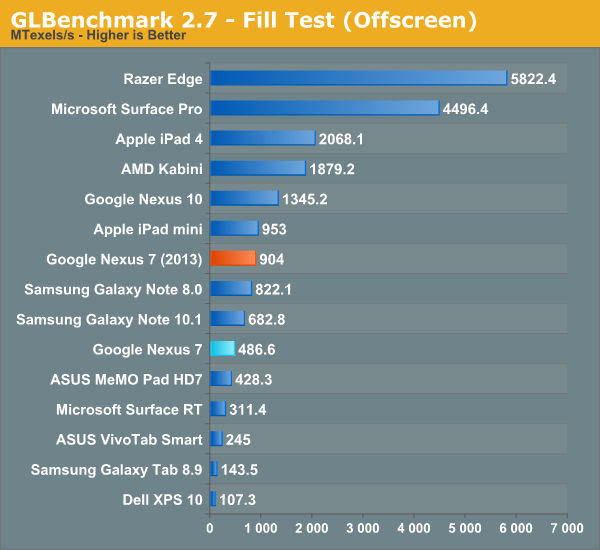
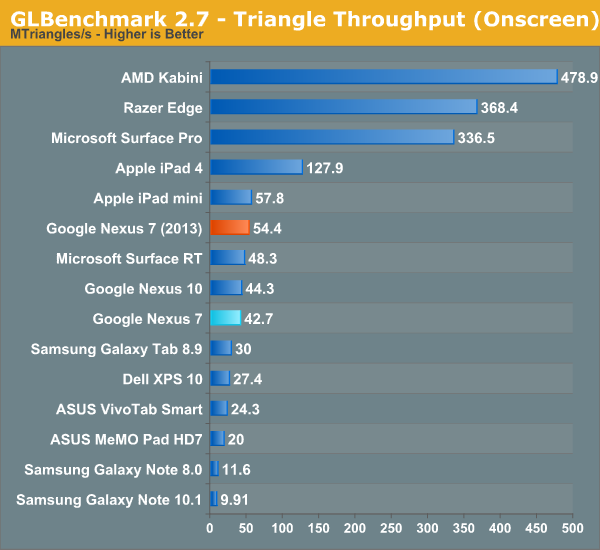
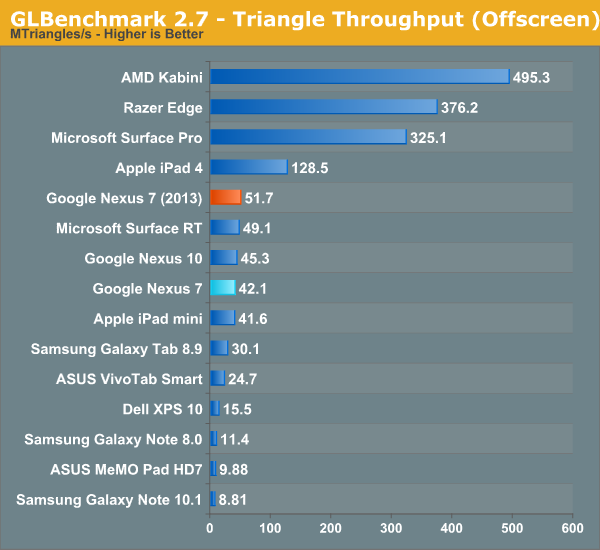
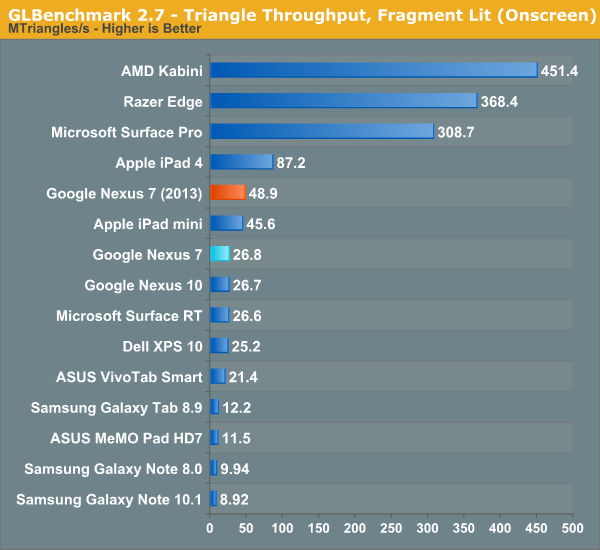
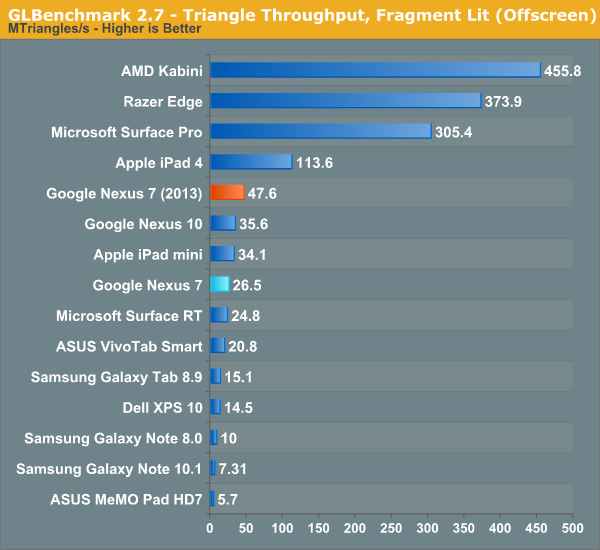
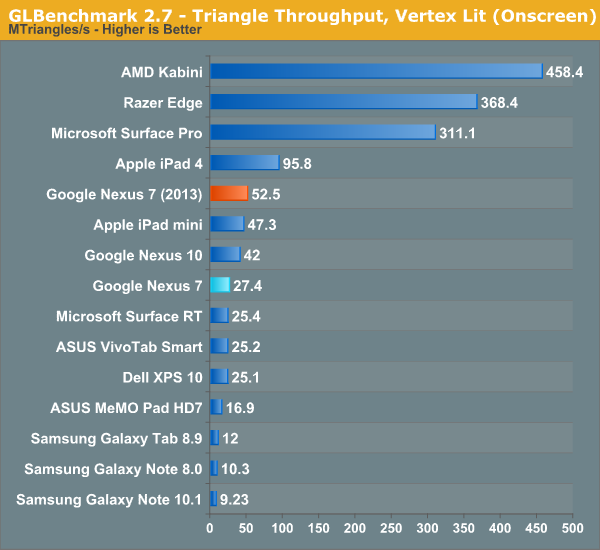
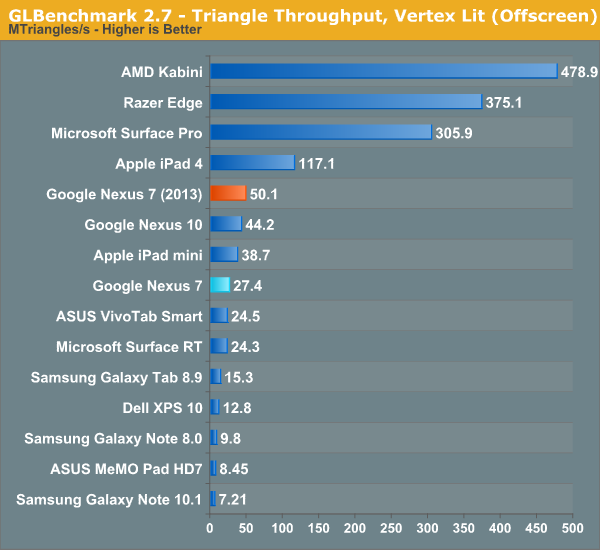

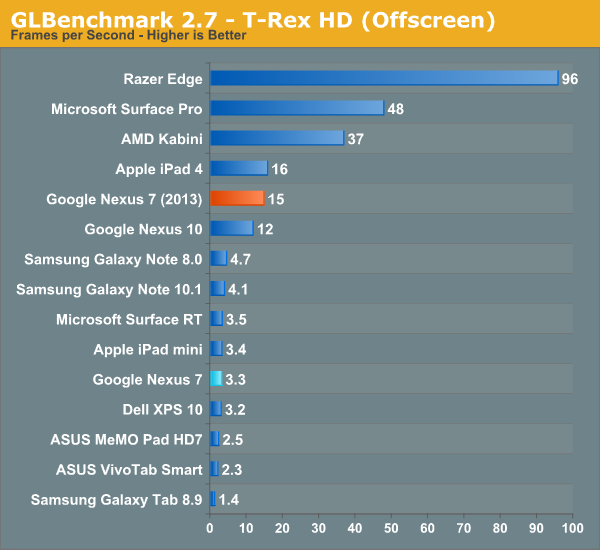
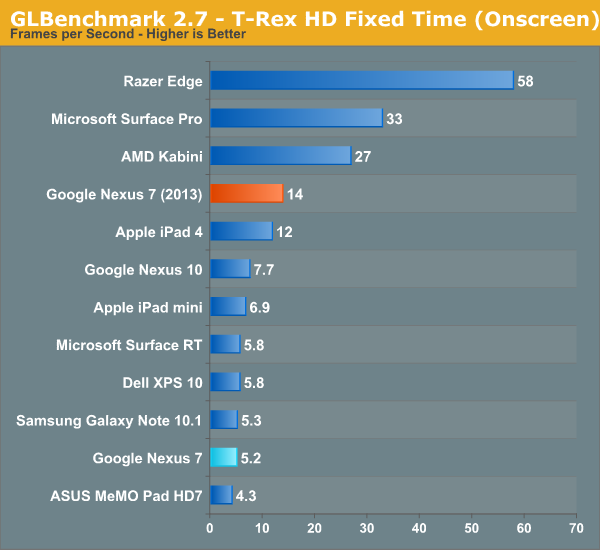
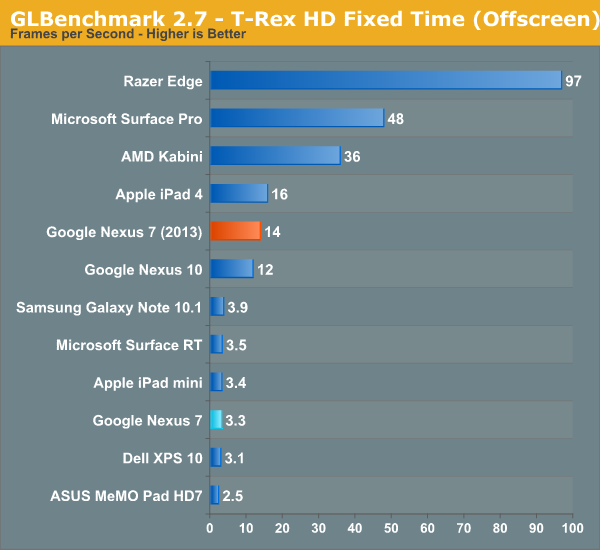
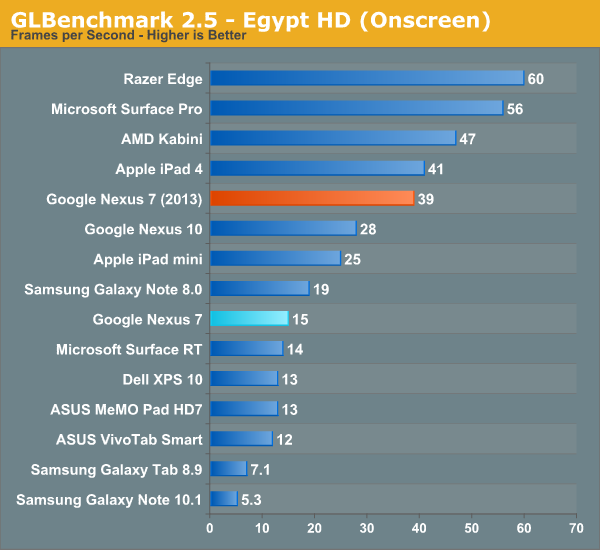
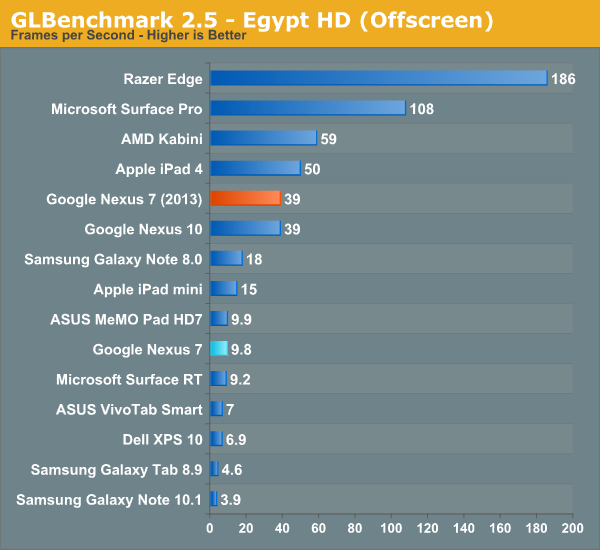
Suffice it to say, moving from 1.2–1.3 GHz Tegra 3 to 1.5 GHz APQ8064 represents a big jump forwards in performance. Google claimed 1.8x improvement on CPU performance, and 4x improvement on GPU, which gets validated pretty much consistently through the benchmarks. I never felt like Tegra 3 was a slouch by any means (performance was more I/O bound on the OG Nexus 7, which we’ll talk about in a moment), but the new Nexus 7 has ample performance for the considerable increase in screen resolution.
Dat eMMC
It wasn’t any secret with the original Nexus 7 that much of the real world performance was gated by storage I/O throughput – we wrote about it after all – and storage performance was a common complaint while multitasking on a few other previous and similar era ASUS tablets. Most of the time performance was acceptable, and for $200 you can’t complain too much about things, the issue was that further on in the life of the tablet performance began degrading somewhat notably, leading to complaints.
Obviously the first thing I did on the Nexus 7 (2013) was run Androbench with the same 100 MB settings to test and see what out of box I/O performance looks like. Things are much better with the new Nexus 7 than they were with the previous one, so at a high level all is good.
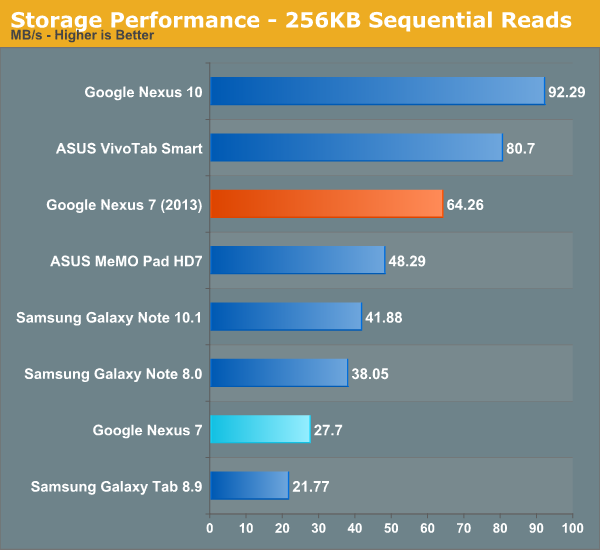
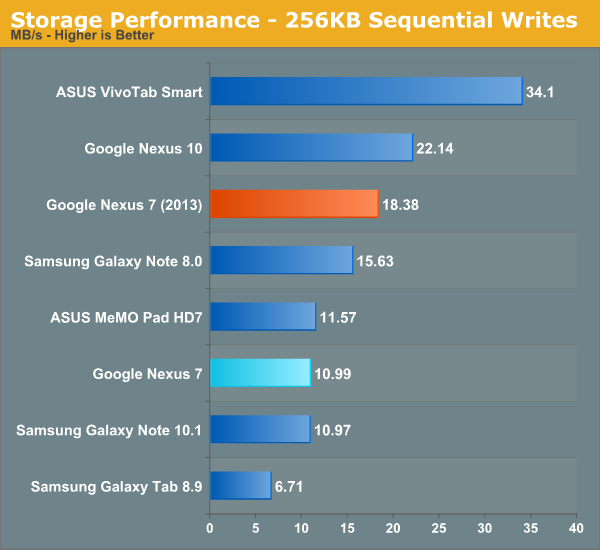
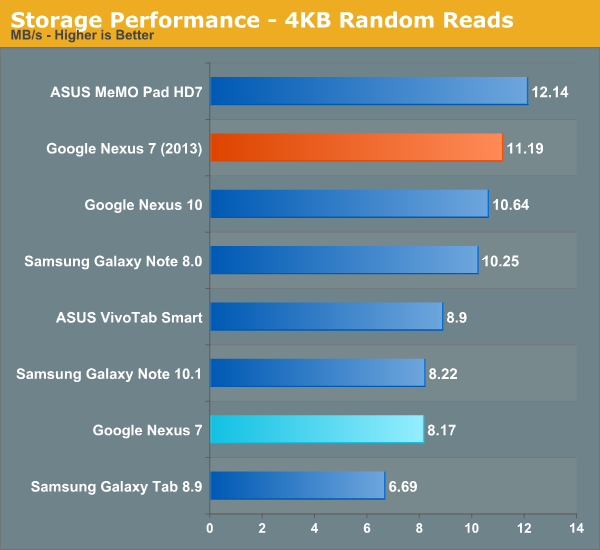

The story actually is a bit more involved however. One of the big problems was that the slowness which occurred with the prior Nexus 7 took device aging to appear – it was great for the first few months, but after you started loading it things tailed off. The new Nexus 7 (2013) with Android 4.3 includes support for fstrim, essentially idle garbage collection, which TRIMs the eMMC when a few conditions are met – the device is idle, screen off, and battery above roughly 70-percent. I’m told that TRIM support has been part of the eMMC standard since around version 4.2, it was just a matter of enabling it in software. The result is that the new Nexus 7 shouldn’t have these aging affects at all. Better yet, fstrim support has also been added to the old Nexus 7 with as of the Android 4.3 update, so if you’ve got a Nexus 7 that feels slow, I/O performance should get better after fstrim runs in the background. I'm checking on whether the other Nexus devices have also had TRIM support added. I would consider the slow storage aging problem fixed as of now, and Google took the eMMC and storage I/O performance issues with the previous Nexus 7 to heart for this version.


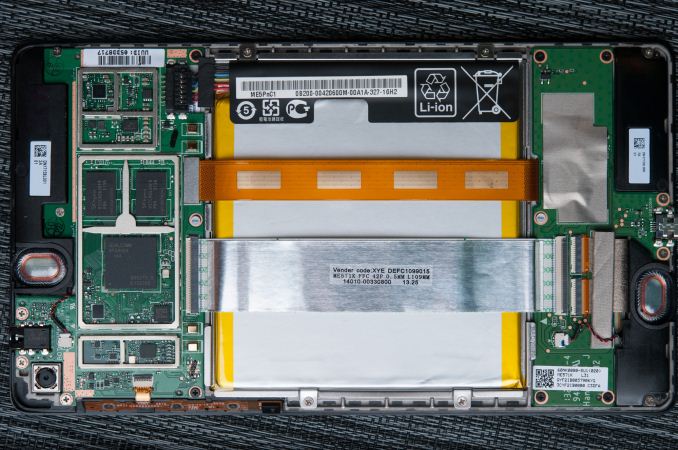
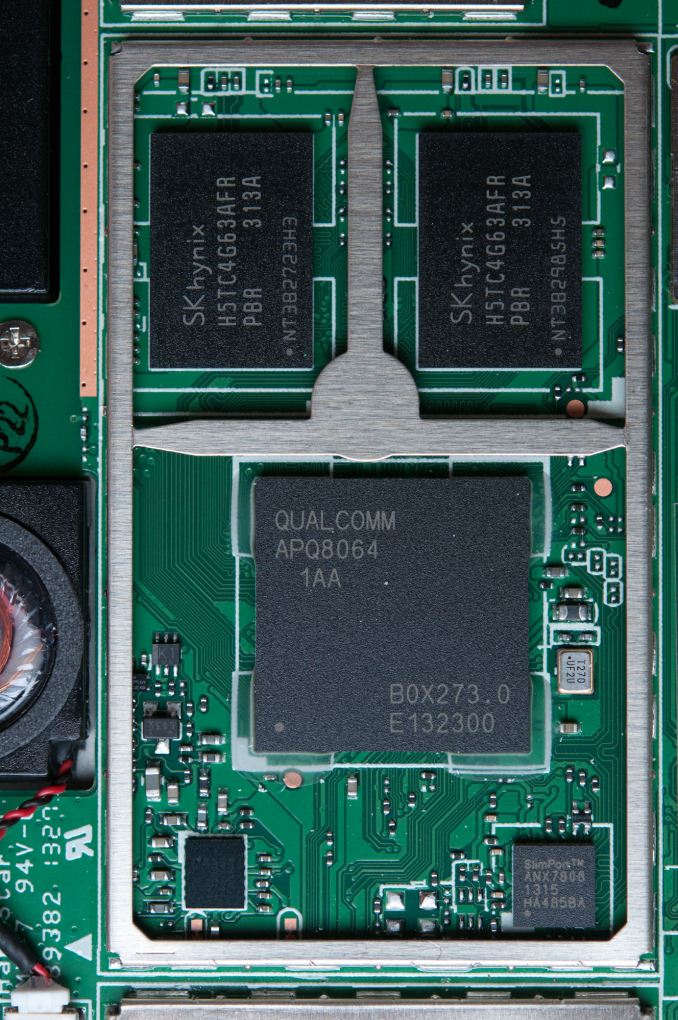














252 Comments
View All Comments
jjj - Saturday, July 27, 2013 - link
Still no microSD so not touching it but the really sad part is that this is the best and will most likely remain the best small Android tablet since everybody is focusing on budget. There is plenty of room for better specs but somehow i doubt we'll see such a product. Google should have made a high end model too,nobody else does it. Android for small tablets shouldn't be upper mid-range (like the new Nexus) or less. Everybody is making Android tablets nowadays and somehow they don't manage to cover all sizes and market segments. It's fantastic that there are decent 7 inchers at 100$ but it would also be great if there was a 7 inch tablet that's not missing anything - and that goes for all sizes.It's also nice to see that screen , such screens getting cheap enough will enable a nicer Oculus Rift :D
aNYthing24 - Saturday, July 27, 2013 - link
This is ridiculous. How many tablets do know that have replaceable memory and replaceable batteries?nerd1 - Saturday, July 27, 2013 - link
Most android tablets have micro sd slots. That said, I just dont have enough excuses not to buy this one...sherlockwing - Saturday, July 27, 2013 - link
Unfourtatedly I have to pass on this one, my Video library is 40GB+ so the lack of a 64GB model or a micro SD slot kills it for me.Sunburn74 - Saturday, July 27, 2013 - link
You watch all 40gb on a daily basis? This is a mobile device, not a media server.Broo2 - Saturday, July 27, 2013 - link
You have 40GB of videos that you like to watch on a re-occurring basis? or is the 40GB a collection of movies you have purchased that you may want to watch again? (i.e. a digital version of a shelf of DVD/Blu-Ray movies.)mr_tawan - Saturday, July 27, 2013 - link
You can just install the custom rom, plug-in a card reader in with the OTG cable. Then you can plug your media card (even CF).Well I would say setting up a media server is a lot more convenience.
Impulses - Sunday, July 28, 2013 - link
You don't even need root to use USB OTG (at least not with the original Nexus 7), much less a custom ROM, just an app... And USB OTG is far more versatile in general since you can hook up fast USB 3.0 flash drives that way, if you actually need tons of storage then you're also transferring tons of content from a PC and USB 3.0 helps immensely with that (microSD cards can't touch the 200MB/s speed of some of the cheap drives out there).I fail to see the usage case for card slots that can't be satisfied by USB OTG.
leomax999 - Sunday, July 28, 2013 - link
Would you rather carry a usb thumb drive,cables and adapters everywhere or have a microSD card in its slot?Let's try to break down. Assuming 32Gig Nexus has ~27Gigs of free space.
Couple of 1080p movies + videos = ~12G
A bit of music, Say ~10G
Some pictures ~1G
Applications + Games (No offline Maps,No big games!) ~2G
Which leaves you about 2Gig of free space which is a bit too full for flash performance, without counting any other space required for app data/cache etc.
The new Nexus is a good upgrade,But google has yet to sort the storage.
deathgod1 - Saturday, July 27, 2013 - link
I'm with you on the micro SD. I currently have a Tranformer Infinity 32GB with a 32GB SDcard and I'm constantly having to delete items off both to free up space. I don't live in a country where wifi is everywhere (or where streaming options are offered), so I keep all my media on my tab. That includes app backups with Titanium, backups of the ROM i'm using, nandroid backups, movies, music, music videos, pictures,books, comics, etc. HD games like NOVA are several GB's in size. It's really easy to run out of space if you're a media centric person like me. My tablet has basically replaced my laptop, but I guess I'm in the minority of people.